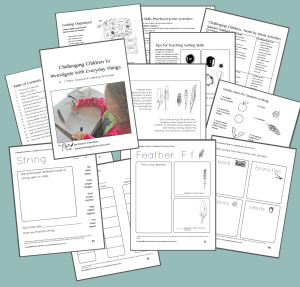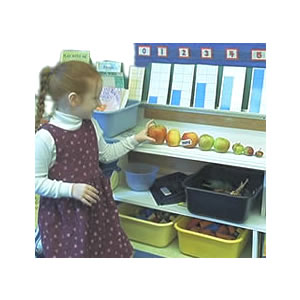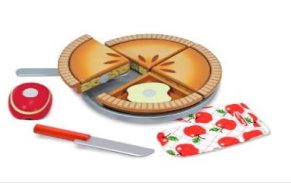Apple theme math activities provide opportunities for students to practice the skills of sorting, sequencing, graphing, patterning and data recording.
Apple studies are fun and they are readily available in most areas. They come in a variety of sizes, shapes and colors, all of which makes them great for comparison and classifying activities.
As always, introduce all new concepts with concrete materials and avoid giving the children piles of apple type worksheets instead of providing hands on experiences with 3-dimensional manipulatives when learning math.
Apple Theme Math – Sort and sequence apples:
- Have each student bring an apple to school
- Bring a variety of apples for the children who forget to bring one
- Children put their apples in a row
- Sort the apples by color
- Count the apples
- Then sequence the apples by size
- Compare various apples in a balance scale to see which apples are heavier
Teach children to observe and record:
- Model doing an observation drawing of your apple (remember to share your thinking… “what shape should I use? what size is my apple? what colors do I see?”
- Have the children do an observation drawing of their own apples and then cut them out
Create an apple graph by color
- Make some columns on chart paper and draw an apple of each color on the bottom of each column.
- Have each child draw the apple they brought from home, color it and cut it out.
- Each child then glues their cut out apple picture in the appropriate column.
- Talk about which color sets have more or fewer apples.
Estimation
- Estimate how many seeds are in an apple
- Have children write their number on the chalk/whiteboard
- Cut an apple open and count the seeds
- Ask the children if they think all apples have the same number of seeds
- Choose another apple, cut it open and count
- Compare and then share the apple and enjoy eating
Apple math pattern hats
- Create apple theme math pattern hats using cut out red and green apples.
- Have the children create a repeat pattern to glue on their hat band.
Teach with toys…
Play is the basis of all children’s learning and providing toys like these in your math center gives your students learning experiences that increase their understanding of number and fractions and give them opportunities to use the vocabulary of math.
Making the shift away from using so many worksheets?
If replacing worksheets with more hands on activities seems overwhelming or if you feel less than confident about the process, you may find my ebook, “Challenging Children to Investigate With Everyday Things”, a great introduction to the process.
You’ll learn how to use common objects for learning experiences and how to get organized for simple weekly lessons. And best of all, if you’re just starting out, you’ll find 39 detailed activities with 50 recording sheets to start you on your way.
If you’re interested, check it out here…



